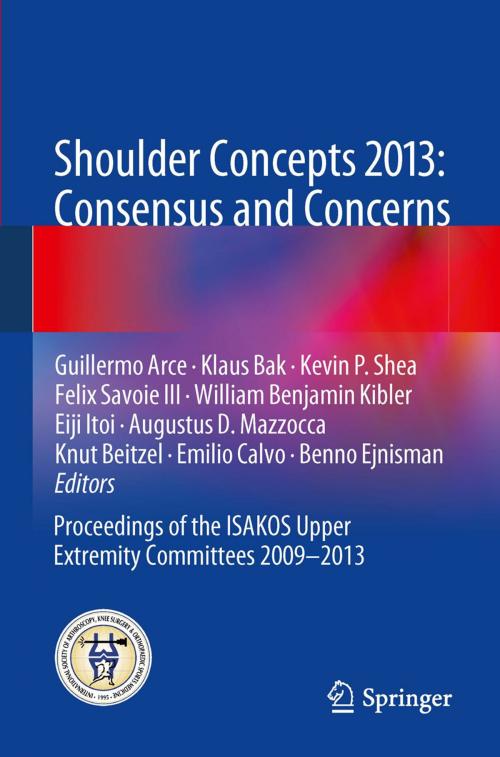Shoulder Concepts 2013: Consensus and Concerns
Proceedings of the ISAKOS Upper Extremity Committees 2009-2013
Nonfiction, Health & Well Being, Medical, Specialties, Sports Medicine, Orthopedics| Author: | ISBN: | 9783642380976 | |
| Publisher: | Springer Berlin Heidelberg | Publication: | May 16, 2013 |
| Imprint: | Springer | Language: | English |
| Author: | |
| ISBN: | 9783642380976 |
| Publisher: | Springer Berlin Heidelberg |
| Publication: | May 16, 2013 |
| Imprint: | Springer |
| Language: | English |
This booklet is intended as an insightful update on daily shoulder management closely based on the content of closed consensus meetings of the International Society of Arthroscopy, Knee Surgery and Orthopaedic Sports Medicine (ISAKOS) Upper Extremity Committee (UEC). Section A provides a comprehensive review of the currently available classifications and outcome scores for shoulder disorders, illustrating their potential pitfalls and limitations. The authors emphasize the need for standardization of shoulder assessment and propose two novel classifications that are expected to facilitate tailoring of management. Section B describes pioneering techniques to re-establish shoulder function after dislocation of the acromio-clavicular joint and covers surgical indications and decision-making criteria. Section C describes the current state of evidence concerning rotator cuff disorders, providing novel theories regarding the underlying biomechanics and reconstruction techniques.
This booklet is intended as an insightful update on daily shoulder management closely based on the content of closed consensus meetings of the International Society of Arthroscopy, Knee Surgery and Orthopaedic Sports Medicine (ISAKOS) Upper Extremity Committee (UEC). Section A provides a comprehensive review of the currently available classifications and outcome scores for shoulder disorders, illustrating their potential pitfalls and limitations. The authors emphasize the need for standardization of shoulder assessment and propose two novel classifications that are expected to facilitate tailoring of management. Section B describes pioneering techniques to re-establish shoulder function after dislocation of the acromio-clavicular joint and covers surgical indications and decision-making criteria. Section C describes the current state of evidence concerning rotator cuff disorders, providing novel theories regarding the underlying biomechanics and reconstruction techniques.















